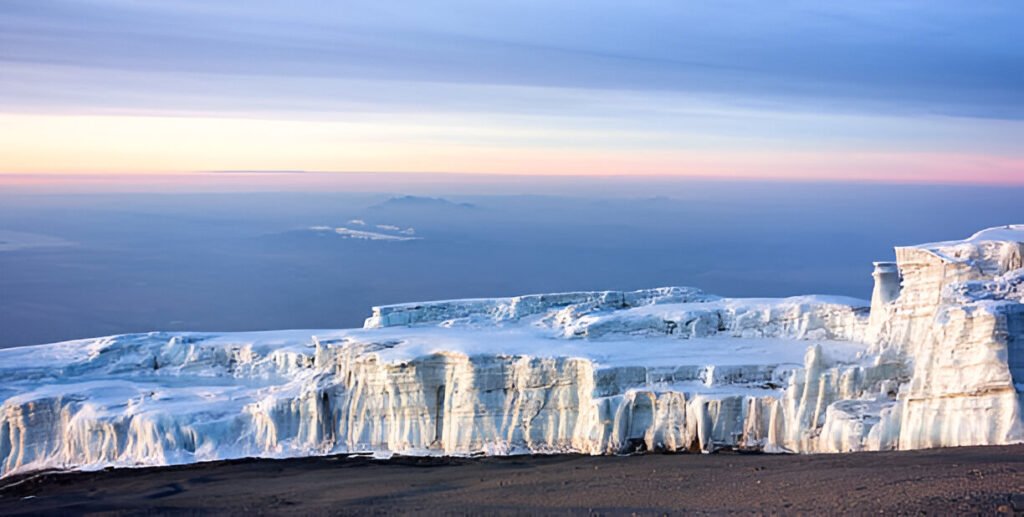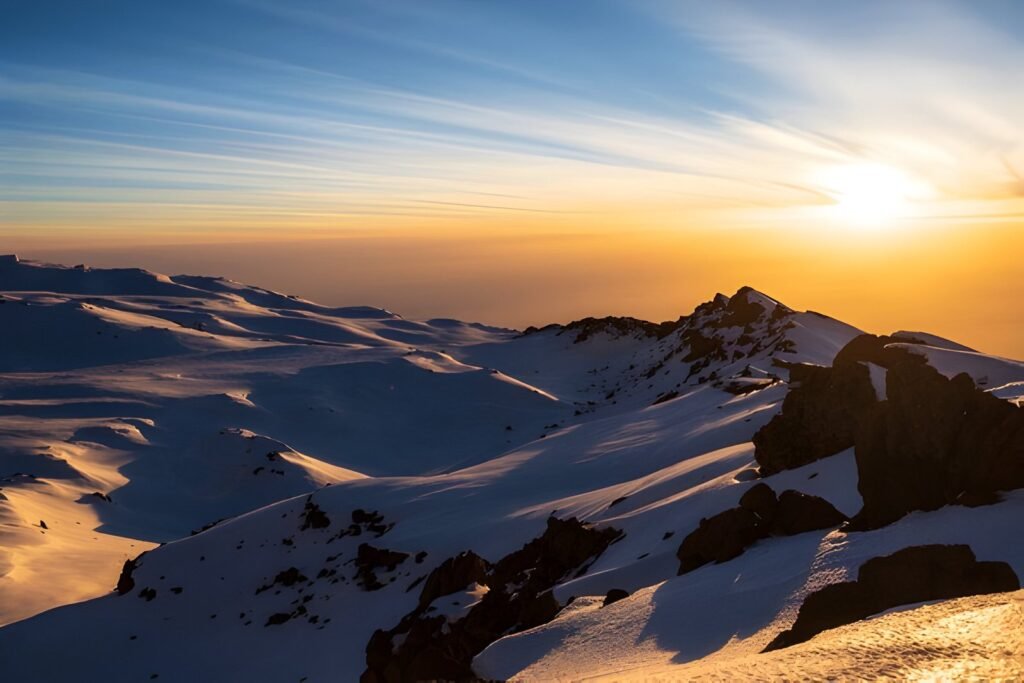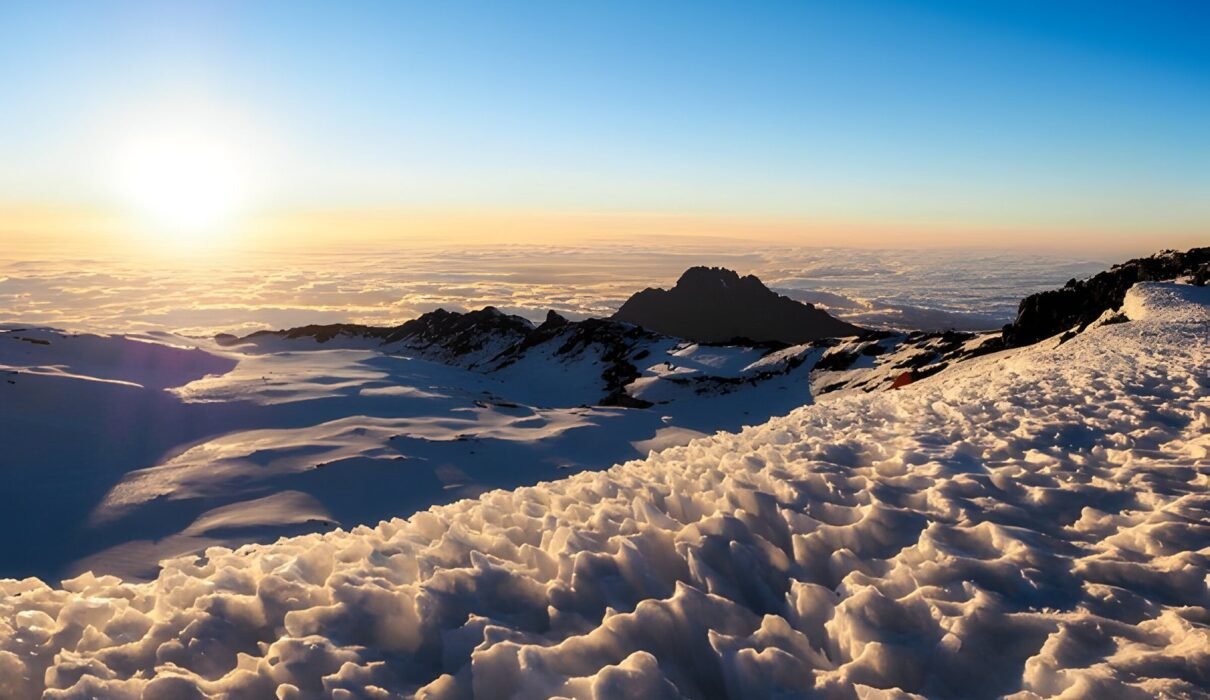Kilimanjaro Summit: Expert Guide to Reaching the Roof of Africa 2025/2026. Mount Kilimanjaro, the tallest mountain in Africa and one of the most iconic peaks in the world, attracts thousands of adventurers and trekkers every year. Located in Tanzania, its snow-capped summit, known as Uhuru Peak, stands at 5,895 meters above sea level. Climbing Kilimanjaro is a once-in-a-lifetime experience, offering both challenges and unmatched beauty.
In this comprehensive guide, we’ll explore everything you need to know about the Kilimanjaro Summit: from choosing the best route, preparing for the altitude, understanding the mountain’s unique ecosystems, and more.

Kilimanjaro Summit: Expert Guide to Reaching the Roof of Africa 2025/2026 Overview
Kilimanjaro Summit: Expert Guide to Reaching the Roof of Africa 2025/2026. Mount Kilimanjaro is made up of three volcanic cones: Kibo, Mawenzi, and Shira. While Kibo hosts Uhuru Peak, the tallest point on the mountain, Mawenzi and Shira are extinct volcanoes.
This towering giant is a World Heritage Site, attracting climbers from around the globe. The allure of Kilimanjaro lies not just in its height, but in the diversity of ecosystems you encounter on the way to the top. From rainforests to alpine deserts, and finally, to the icy summit, Kilimanjaro offers a one-of-a-kind trekking experience.
Kilimanjaro Summit: Expert Guide to Reaching the Roof of Africa 2025/2026 / Why Climb Kilimanjaro?
Climbing Kilimanjaro is more than just a physical challenge. It’s a journey through diverse landscapes, where climbers experience both the serenity and difficulty of a high-altitude trek. Reaching the summit gives you an overwhelming sense of accomplishment. Moreover, the mountain’s status as one of the Seven Summits— the highest peaks on each continent—makes it a bucket-list destination for climbers worldwide
Kilimanjaro Summit: Expert Guide to Reaching the Roof of Africa 2025/2026 – Kilimanjaro Summit Routes
Choosing the right route is one of the most important decisions you will make when planning your climb. There are several routes to the top, each offering a unique experience and varying degrees of difficulty. Here’s a breakdown of the main routes:
- Marangu Route (Coca-Cola Route): The oldest and one of the most popular routes, offering huts for accommodation.
- Machame Route (Whiskey Route): A more challenging yet scenic route, recommended for those seeking a longer and more varied trek.
- Lemosho Route: Known for its beautiful scenery and excellent acclimatization profile, making it one of the best choices for climbers.
- Rongai Route: Approaching from the north, it’s less crowded and a great option during the rainy season.
- Umbwe Route: The steepest and most direct path to the summit, typically chosen by more experienced climbers.
Kilimanjaro Summit: Expert Guide to Reaching the Roof of Africa 2025/2026 – Preparation for the Kilimanjaro Summit
Proper preparation is key to a successful summit attempt. Here’s what you need to consider:
- Physical Fitness: Climbing Kilimanjaro requires a good level of fitness, with a focus on cardiovascular and leg strength. Regular hiking, strength training, and endurance exercises are essential in the months leading up to your trek.
- Mental Preparation: The mental challenge of altitude, long trekking days, and varying weather conditions can be tough. Keeping a positive mindset is essential.
- Gear Checklist: A successful Kilimanjaro climb requires specific gear. Key items include:
- High-quality hiking boots
- Thermal layers and waterproof clothing
- A good sleeping bag (for temperatures as low as -10°C)
- Trekking poles and a headlamp
Kilimanjaro Summit: Expert Guide to Reaching the Roof of Africa 2025/2026 – Acclimatization and Altitude Sickness
One of the biggest challenges when climbing Kilimanjaro is altitude sickness. As you ascend, the oxygen levels decrease, making it harder for your body to function normally. Symptoms of altitude sickness include headaches, nausea, and dizziness.
To mitigate the effects of altitude sickness, it’s important to:
- Take it slow: Follow the motto, “pole pole” (slowly, slowly) to allow your body to adjust to the altitude.
- Stay hydrated: Drink plenty of water throughout your trek.
- Choose a longer route: Opt for a longer route with a better acclimatization profile, like the Lemosho or Machame route.
- Consider medication: Consult your doctor about taking medications like Diamox to help with altitude sickness.
The Summit Day: Reaching Uhuru Peak
Summit day on Kilimanjaro is both physically and mentally exhausting. Most trekkers begin their final ascent around midnight, trekking through the night to reach the summit at sunrise. The temperature can drop significantly, and the terrain becomes icy and steep. However, reaching Uhuru Peak as the sun rises over the African plains is a moment that makes all the hard work worthwhile.
Post-Summit: Descending Kilimanjaro
After reaching the summit, the descent begins immediately. While descending is faster than the ascent, it can still be challenging on your knees and legs. Take your time, use trekking poles for balance, and focus on the final goal: safely returning to base camp.
Best Time to Climb Kilimanjaro
The best times to climb Kilimanjaro are during the dry seasons, which run from:
- January to March: Cooler temperatures and fewer crowds.
- June to October: Warmer and busier, but with clear skies offering stunning views.
Avoid the rainy seasons, which are from April to May and November to December, as trails can become muddy and slippery.
Local Culture and Ethics on Kilimanjaro
The local Chagga people consider Kilimanjaro a sacred mountain. Understanding and respecting the local culture is crucial when climbing. Moreover, Kilimanjaro National Park is a protected area, and climbers are encouraged to follow Leave No Trace principles to minimize their environmental impact.
When choosing a tour operator, opt for companies that treat their porters and guides fairly, paying them reasonable wages and providing adequate gear.
Useful Resources for Planning Your Kilimanjaro Climb
When preparing for your Kilimanjaro Summit, check out these helpful resources:
Additional resources that provide valuable information:
- Kilimanjaro Packing List
- Expert Guide to Mount Kilimanjaro
- Travel Africa Magazine on Kilimanjaro
- World Nomads: How to Survive Kilimanjaro

Kilimanjaro Summit: Expert Guide to Reaching the Roof of Africa 2025/2026 FAQs
1. How long does it take to climb Kilimanjaro? The average climb takes 5-9 days, depending on the route you choose and your acclimatization plan.
2. Do I need prior climbing experience? No technical climbing skills are required, but a high level of fitness is necessary.
3. What are the chances of reaching the summit? With proper acclimatization and preparation, about 85-90% of climbers reach the summit.
4. How much does it cost to climb Kilimanjaro? Costs vary by operator, but expect to spend between $1,500 and $5,000, excluding flights and gear.
5. What is the weather like on Kilimanjaro? Weather conditions vary by elevation. Lower elevations are warm and tropical, while the summit can be extremely cold, with temperatures dropping as low as -20°C.
6. Is tipping expected on Kilimanjaro? Yes, tipping guides and porters is customary. Plan to tip around $300-$400 for the entire trek.
Kilimanjaro Summit: Expert Guide to Reaching the Roof of Africa 2025/2026 : Conclusion
Climbing Mount Kilimanjaro is an unforgettable experience that offers both challenges and immense rewards. Proper preparation, choosing the right route, and understanding the altitude and terrain will help ensure a successful summit attempt. Whether you’re an experienced trekker or a first-time climber, Kilimanjaro offers an adventure like no other.
For more information, check out these valuable resources:

